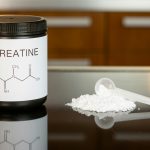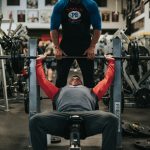
Why Measurement Matters in Muscle-Centric Wellness
In the evolving landscape of faculty and workplace wellness, resistance training has moved beyond the gym and into the boardroom. Its physiological benefits are now well-supported by research, including improved metabolic flexibility, cognitive function, and long-term disease prevention. However, despite these findings, one persistent challenge remains: how do we effectively measure the success of workplace resistance training programs? As mentioned in my last article, as organizations continue to seek wellness interventions that deliver both Return on Investment (ROI) and Value on Investment (VOI), resistance training presents a high-impact solution.
Yet, its true potential will only be realized when paired with thoughtful, evidence-based measurement strategies. For personal trainers, this article serves as your blueprint. We’ll explore the metrics that matter—from grip strength and functional mobility to metabolic biomarkers and wearable data. More importantly, we will examine how to link these metrics to workplace performance, helping you convey your value to HR leaders, faculty wellness committees, and corporate clients alike.
What You’ll Learn in This Article
- Best practices for assessing functional strength in sedentary professionals
- How resistance training metrics correlate with productivity, resilience, and cognitive output
- The role of metabolic biomarkers in validating health outcomes
- How wearable tech and digital tracking can improve client adherence and institutional buy-in
- Strategic implications for personal trainers entering faculty or executive coaching markets
Best Practices for Assessing Functional Strength in Faculty and Knowledge Workers
For knowledge workers—such as professors, researchers, and corporate professionals—measuring strength must go beyond max lifts or aesthetics. The goal is to evaluate how improvements in muscle function support physical resilience, postural integrity, and energy availability throughout cognitively demanding workdays.
Grip Strength Dynamometry
Grip strength has emerged as one of the most practical, predictive, and versatile markers of overall strength, longevity, and metabolic health (Bohannon, 2019). It’s highly correlated with functional outcomes and serves as a proxy for total body strength. Research has shown that lower grip strength is associated with increased risk of cognitive impairment, all-cause mortality, and musculoskeletal degeneration (Chen et al., 2013; McGrath et al., 2020).
Best Practice
Use a handheld dynamometer (e.g., Jamar) and follow standardized protocols involving three readings per hand, with the client seated and the elbow at 90 degrees (Roberts et al., 2011).
30-Second Chair Stand Test
Although often associated with geriatric populations, the 30-second chair stand test still has lots of practical applications, especially for those prospective clientele who are entirely new to exercise or have been largely sedentary throughout their entire lives. Consequently, this test assesses lower body strength and power, both essential for independent mobility and long-term functional health. In faculty and administrative populations, it translates to reduced fall risk, increased movement confidence, and better recovery from prolonged sitting (Jones et al., 1999).
Best Practice
Instruct participants to stand and sit from a chair as many times as possible in 30 seconds without using their arms. Compare results to age and gender-specific norms.
Timed Up and Go (TUG)
Often associated with fall risk assessment, the TUG test also evaluates lower-body strength, balance, and agility. It is a powerful predictor of mobility limitations in adults and has substantial implications for daily function in workplace settings (Podsiadlo & Richardson, 1991).
Best Practice
Record the time it takes for a client to rise from a chair, walk 3 meters, turn around, return, and sit back down. This test is quick, non-invasive, and effective for gauging mobility and strength progression over time.
Modified Push-Ups and Bodyweight Squats
Modified resistance assessments like wall push-ups and supported squats offer practical insights into core strength, muscular endurance, and movement efficiency, all of which influence posture, injury risk, and energy levels.
Best Practice
Focus on form, tempo, and time under tension rather than reps. These assessments also provide qualitative feedback that clients can observe and improve on weekly.
Strength Metrics and Workplace Performance: What’s the Link?
Direct studies linking strength to office productivity remain limited. However, mounting evidence from related fields provides strong support for the indirect effects of muscular strength on work capacity, cognition, and resilience.
Grip Strength and Cognitive Performance
Recent studies demonstrate that grip strength correlates with cognitive flexibility, working memory, and executive functioning (Tolea & Galvin, 2015; Storoschuk et al., 2023). A systematic review by Wu et al. (2021) emphasized grip strength as a reliable screening tool for overall functional capacity, especially in older adults at risk of decline.
Implications for Trainers
Improved grip strength may not directly increase meeting productivity, but it does signal greater neurological integrity and metabolic resilience, both of which fuel sustainable performance.
Resistance Training and Musculoskeletal Productivity
Musculoskeletal disorders (MSDs) are a significant cost driver in faculty and corporate environments, accounting for approximately $353 billion annually in healthcare costs and productivity losses (Kaiser Permanente, 2023). Resistance training is a front-line defense against MSDs, particularly in reducing low back pain, carpal tunnel syndrome, and neck strain (Zech et al., 2017).
Implications for Trainers
Clients who train consistently report fewer pain days, lower presenteeism, and more consistent energy—three metrics any HR director will care about.
Functional Strength and Cognitive Endurance
Functional strength exercises like deadlifts, loaded carries, and lunges have been shown to increase postural efficiency, proprioception, and overall fatigue resistance, especially during long hours of seated or repetitive cognitive work (Physiopedia, 2023).
Deadlifts in particular contribute to:
- Improved hip hinge and core stability
- Lower incidence of lower back pain
- Enhanced load tolerance for daily tasks (Physiopedia, 2023)
These are not just gym-based benefits. They’re workday performance enhancements.
The Role of Metabolic Markers in Wellness Program Evaluation
For personal trainers partnering with institutions, metabolic data provides an objective layer of evidence to support program outcomes. Here are three key markers worth tracking (with medical collaboration and client consent):
Insulin Sensitivity and HbA1c
Resistance training improves insulin sensitivity, which reduces energy crashes, enhances focus, and lowers diabetes risk. A study by Dunstan et al. (2002) found that even twice-weekly strength training significantly improved HbA1c and fasting glucose in adults with Type 2 diabetes.
Why It Matters
Metabolic stability supports better energy regulation, which is essential for productivity and emotional regulation in high-stakes professions.
VO2 Max
Though traditionally tied to cardiovascular training, resistance-based circuit programs have been shown to improve VO2 max, which predicts aerobic endurance, immune resilience, and cognitive sharpness (Kraemer et al., 1995).
Why It Matters
VO2 max improvements are associated with decreased CRP (C-reactive protein) levels and reduced inflammation—an early marker of chronic disease risk.
C-Reactive Protein (CRP)
CRP is a systemic inflammation marker tied to heart disease, cancer risk, and cognitive decline. Resistance training has been shown to lower CRP over time, signaling systemic recovery and improved physiological resilience (Kohut et al., 2006).
📱 The Power of Wearables and Digital Tracking in Strength-Based Programs
If you’re a personal trainer aiming to deliver measurable, scalable, and engaging programming, digital integration is no longer optional—it’s essential.
Real-Time Feedback and Behavior Change
Wearables like Oura Ring, Apple Watch, and WHOOP provide real-time data on heart rate variability (HRV), recovery, and training strain—offering insights far beyond traditional logs (Duke University, 2022).
These tools create a feedback loop that improves client self-awareness and supports behavior change science through gamification, social reinforcement, and micro-goal setting (HigherEchelon, 2023).
Data Transparency and Buy-In
HR departments and faculty wellness leaders are data-driven. Offering progress dashboards, weekly summaries, and performance comparisons (anonymized) makes your training protocols fundable, scalable, and repeatable.
Conclusion: Trainers as Translators of Performance Data
Trainers who can collect, interpret, and communicate performance metrics—grip strength, chair stand results, metabolic markers, and digital outputs—become more than fitness professionals. They become data-savvy performance strategists.
By combining resistance training with measurable outcomes, trainers can:
- Validate the physiological and cognitive ROI of their programs
- Improve retention and engagement through feedback loops
- Scale services within institutional frameworks
- Offer a compelling narrative to decision-makers
And that’s how we transform strength from a workout into a workplace advantage.
References
Baicker, K., Cutler, D., & Song, Z. (2010). Workplace wellness programs can generate savings. Health Affairs, 29(2), 304–311. https://doi.org/10.1377/hlthaff.2009.0626
Chen, L., Nelson, D., Zhao, Y., Cui, Z., & Johnston, J. (2013). Relationship between muscle mass and muscle strength, and the impact of comorbidities: A population-based, cross-sectional study of older adults in the United States. BMC Geriatrics, 13(1), 74. https://doi.org/10.1186/1471-2318-13-74
Dam, R., Ancum, J., Verlaan, S., Scheerman, K., Meskers, C., & Maier, A. (2018). Lower cognitive function in older patients with lower muscle strength and muscle mass. Dementia and Geriatric Cognitive Disorders, 45(3–4), 243–250. https://doi.org/10.1159/000486711
Deshmukh, A. (2016). Proteomics of skeletal muscle: Focus on insulin resistance and exercise biology. Proteomes, 4(1), 6. https://doi.org/10.3390/proteomes4010006
Dlamini, M., & Khathi, A. (2023). Prediabetes-associated changes in skeletal muscle function and their possible links with diabetes: A literature review. International Journal of Molecular Sciences, 25(1), 469. https://doi.org/10.3390/ijms25010469
Duke University. (2022). Wearables. Duke Center for Computational and Digital Health Innovation. https://comphealth.duke.edu/initiatives/wearables
HigherEchelon. (2023). The Use of Wearable Technology in Employee Health and Wellness Programs. https://www.higherechelon.com
Kaiser Permanente. (2023). How musculoskeletal conditions impact workforce health. https://business.kaiserpermanente.org
Kohut, M. L., McCann, D. A., Russell, D. W., Konopka, D. N., Cunnick, J. E., Franke, W. D., … & Vanderah, E. (2006). Aerobic exercise, but not flexibility/resistance exercise, reduces serum IL-18, CRP, and fibrinogen levels in older adults. Brain, Behavior, and Immunity, 20(3), 201–209. https://doi.org/10.1016/j.bbi.2005.12.002
Kraemer, W. J., Fleck, S. J., & Evans, W. J. (1995). Strength and power training: Physiological mechanisms of adaptation. Exercise and Sport Sciences Reviews, 23, 363–397.
McGrath, R., Kraemer, W. J., Peterson, M. D., & Gilchrist, S. C. (2020). Handgrip strength is associated with poorer cognitive functioning in aging Americans. Journal of Alzheimer’s Disease, 76(3), 1081–1089. https://doi.org/10.3233/JAD-200466
Pereira, R., Tadinada, S., Zasadny, F., Oliveira, K., Pires, K., Olvera, A., … & Abel, E. (2017). OPA1 deficiency promotes secretion of FGF21 from muscle that prevents obesity and insulin resistance. The EMBO Journal, 36(14), 2126–2145. https://doi.org/10.15252/embj.201696179
Physiopedia. (2023). Deadlift Exercise. https://www.physio-pedia.com/Deadlift_Exercise
Podsiadlo, D., & Richardson, S. (1991). The timed “Up & Go”: A test of basic functional mobility for frail elderly persons. Journal of the American Geriatrics Society, 39(2), 142–148. https://doi.org/10.1111/j.1532-5415.1991.tb01616.x
Roberts, H. C., Denison, H. J., Martin, H. J., Patel, H. P., Syddall, H., Cooper, C., & Sayer, A. A. (2011). A review of the measurement of grip strength in clinical and epidemiological studies: Towards a standardised approach. Age and Ageing, 40(4), 423–429. https://doi.org/10.1093/ageing/afr051
Storoschuk, K., Gharios, R., Potter, G., Galpin, A., House, B., & Wood, T. (2023). Strength and multiple types of physical activity predict cognitive function independent of low muscle mass in NHANES 1999–2002. Lifestyle Medicine, 4(4). https://doi.org/10.1002/lim2.90
Tolea, M., & Galvin, J. (2015). Sarcopenia and impairment in cognitive and physical performance. Clinical Interventions in Aging, 10, 663–671. https://doi.org/10.2147/CIA.S76275
Wang, L., Yang, S., Lu, Y., Hao, W., Wang, J., Yu, S., … & Zhang, Y. (2019). Hypoxia preconditioning promotes endurance exercise capacity of mice by activating skeletal muscle NRF2. Journal of Applied Physiology, 127(5), 1267–1277. https://doi.org/10.1152/japplphysiol.00347.2019
Xu, Z., Fu, T., Guo, Q., Zhou, D., Sun, W., Zhou, Z., … & Gan, Z. (2022). Disuse-associated loss of the protease LONP1 in muscle impairs mitochondrial function and causes reduced skeletal muscle mass and strength. Nature Communications, 13(1). https://doi.org/10.1038/s41467-022-28557-5
Zech, A., Wellmann, K., & Mayer, F. (2017). Effects of sensorimotor training on chronic low back pain: A systematic review. Journal of Back and Musculoskeletal Rehabilitation, 30(2), 247–254. https://doi.org/10.3233/BMR-150448






